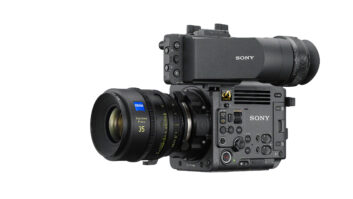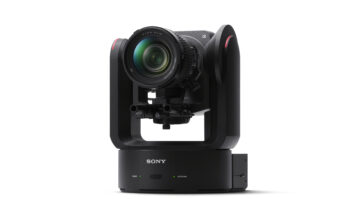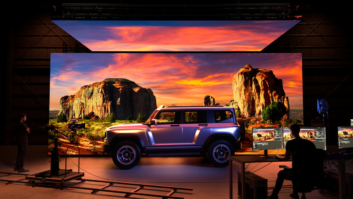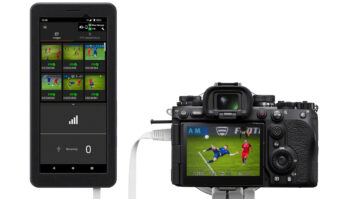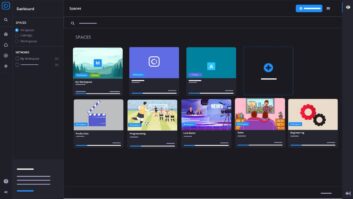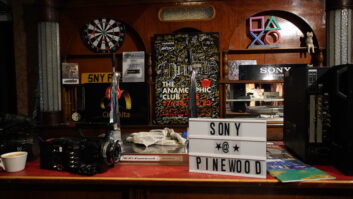Sony’s first NXCAM solid-state camcorder, the now available HXR-NX5, could signal the rollout of a new, low-cost solid-state lineup, writes David Fox.
The new camcorder, the HXR-NX5 is essentially a remodelling of Sony’s Z5 with a new recording system, which replaces the Z5’s HDV tape drive and add-on Compact Flash card recorder with two Memory Stick slots and an add-on solid-state drive recording AVCHD.
Good news for budget users is that its two memory stick slots can also be used to record content on to the more widely available – and cheaper – SDHC cards. As it can also record to an optional 128GB solid-state drive, storing 11 hours, this makes the NX5 one of the most flexible solid-state camcorders yet built.
It records using AVCHD (MPEG-4 AVC/H.264- long GoP) at 24Mbps (variable bitrate with eight-bit sampling, 4:2:0), previously seen for professional use only on Panasonic camcorders. AVCHD is widely used in consumer camcorders, generally at lower bitrates, and is supported natively by some nonlinear edit systems, such as Edius, Vegas and Premiere; but not yet by Apple and Avid, where transcoding is necessary.
It costs roughly the same as the Z5 (under _4,000), and addresses one problem professionals have with AVCHD: its AC3 audio codec. Although this is still included, the NXCAM also records two tracks of linear PCM audio, to meet broadcast expectations.
The camera can also record SD, although only at 9Mbps using MPEG-2, so it would make more sense to down-convert edited HD material. It can also output 10-bit 4:2:2 video via HD-SDI or HDMI, for recording to a separate recorder, such as the AJA KiPro.
It comes with Sony’s own 20x G Lens (4.1-82mm, equivalent to 29.5-590mm), which has manual zoom, focus and iris rings (although no end stops). Auto Focus can have manual assist, and it has three neutral density filters, and Optical Steady Shot image stabilisation with Active Mode for added anti-shake.
The three 1/3in Exmor CMOS chips use Sony’s ClearVid array for improved low-light sensitivity (1.5 Lux). It can record 1920×1080 at 50i or 25p, plus 720/50p and SD. The US version offers 60i/30p/24p and 720/60p, and an optional upgrade makes it 60i/50i switchable
Besides HD-SDI and HDMI, both of which can be used at once, it has component, composite and stereo audio using RCA jacks, and USB 2.0 connections, plus two XLR audio inputs with +48v phantom power, a LANC remote control socket and Timecode link port. It also has a built-in GPS receiver, which embeds GPS metadata when recording, which could be useful for file management, online offerings and archive use.
There is a 3.2in 921,000-pixel LCD (1920×480), with touchscreen interface, and an electronic, high resolution viewfinder (1,227,000 pixels). There are seven customisable buttons on the camera which can be assigned with different functions for quick access. The 2.5kg camcorder consumes 7.7 Watts of power (8.8W with the HXR-FMU128 SSD).
Also launched was the cheaper HDR-AX2000, which should be available in March. It won’t be able to take the 128GB drive, but unlike previous cut-down versions of its professional cameras, it will have two XLR audio jacks. However, it also lacks HD-SDI, 720p, SD recording and GPS.
